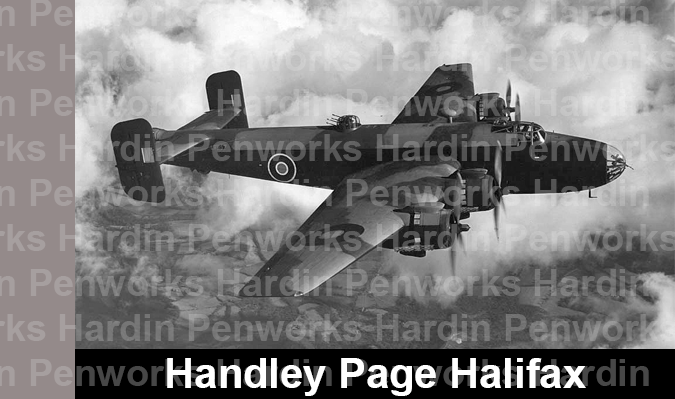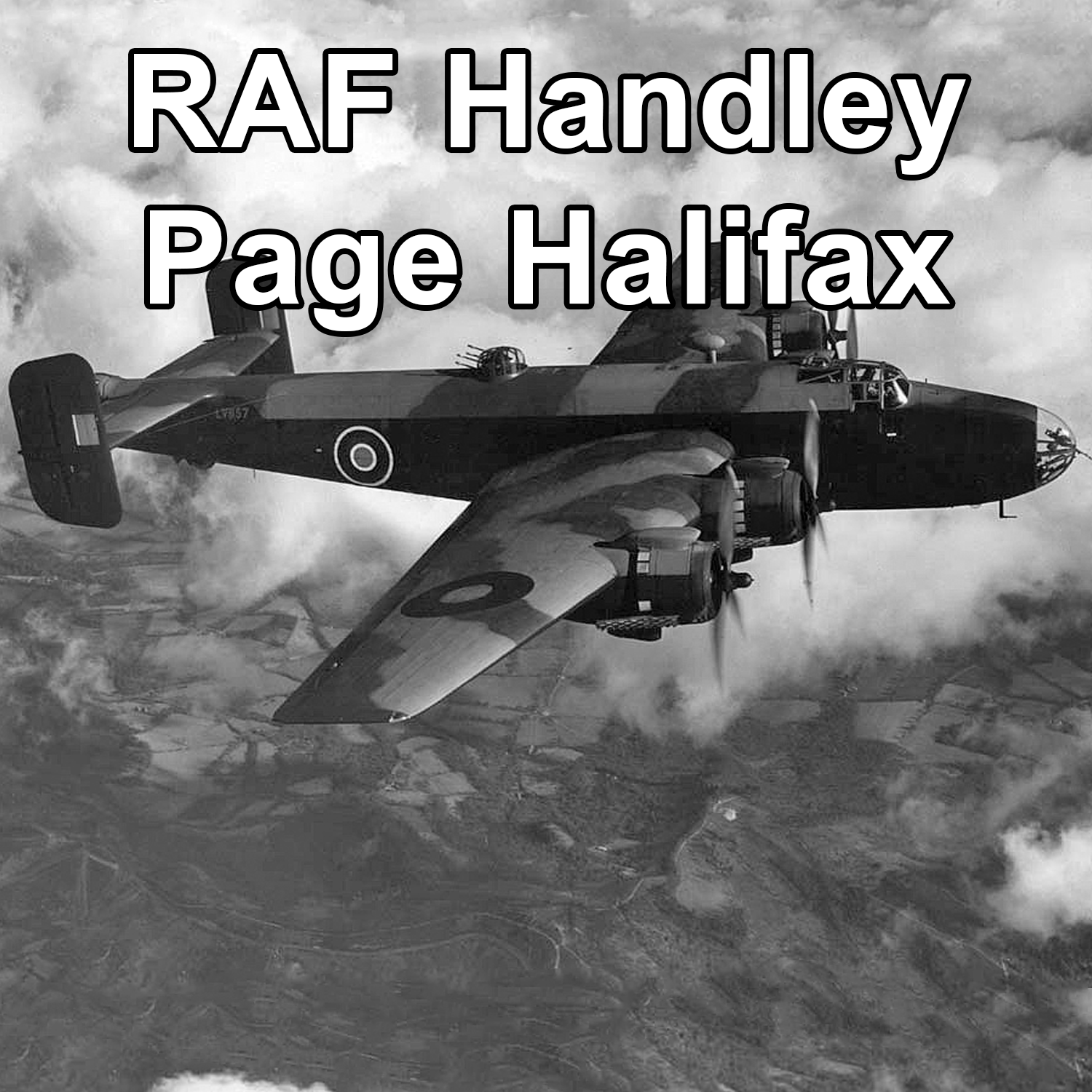RAF Handley Page Halifax
RAF Handley Page Halifax
Prodcut Base price with no add-on options
Low stock: 6 left
Product Price with any add-on options selected
Couldn't load pickup availability
Sierra and Bolt embedded blanks with RAF Handley Page Halifax wood .
All blanks will come with one COA per blank.
COAs are 4" x 6" card stock with foil COA seal.
The Handley Page Halifax is a British Royal Air Force (RAF) four-engined heavy bomber of the Second World War. It was developed by Handley Page to the same specification as the contemporary twin-engine Avro Manchester.
The Halifax has its origins in the twin-engine H.P.56 proposal of the late 1930s, produced in response to the British Air Ministry's Specification P.13/36 for a capable medium bomber for "world-wide use." The H.P.56 was ordered as a backup to the Avro 679, both aircraft being designed to use the Rolls-Royce Vulture engine. The Handley Page design was altered to use four Rolls-Royce Merlin engines while the rival Avro 679 was produced as the twin-engine Avro Manchester which, while regarded as unsuccessful mainly due to the Vulture engine, was a direct predecessor of the Avro Lancaster. Both the Lancaster and the Halifax emerged as capable four-engine strategic bombers, thousands of which were used during the War.
The Halifax performed its first flight on 25 October 1939, and entered service with the RAF on 13 November 1940. It quickly became a major component of Bomber Command, performing strategic bombing missions against the Axis Powers, primarily at night. Arthur Harris, the Air Officer Commanding-in-Chief of Bomber Command, described the Halifax as inferior to the rival Lancaster (in part due to its smaller payload) though this opinion was not shared by many of the crews that flew it.[2] Nevertheless, production of the Halifax continued until April 1945. During their service with Bomber Command, Halifaxes flew 82,773 operations and dropped 224,207 long tons (227,805 t) of bombs, while 1,833 aircraft were lost. The Halifax was also flown in large numbers by other Allied and Commonwealth nations, such as the Royal Canadian Air Force (RCAF), Royal Australian Air Force (RAAF), and Free French Air Force.
Various improved versions of the Halifax were introduced, incorporating more powerful engines, a revised defensive turret layout and increased payload. It remained in service with Bomber Command until the end of the war, performing a variety of duties in addition to bombing. Specialised versions of the Halifax were developed for troop transport and paradrop operations. After the Second World War, the RAF quickly retired the Halifax, the type being succeeded as a strategic bomber by the Avro Lincoln, an advanced derivative of the Lancaster. During the post-war years, the Halifax was operated by the Royal Egyptian Air Force, the French Air Force and the Royal Pakistan Air Force. The type also entered commercial service for a number of years, used mainly as a freighter. A dedicated civil transport variant, the Handley Page Halton, was also developed and entered airline service; 41 civil Halifax freighters were used during the Berlin Airlift. In 1961, the last remaining Halifax bombers were retired from operational use.
Share





